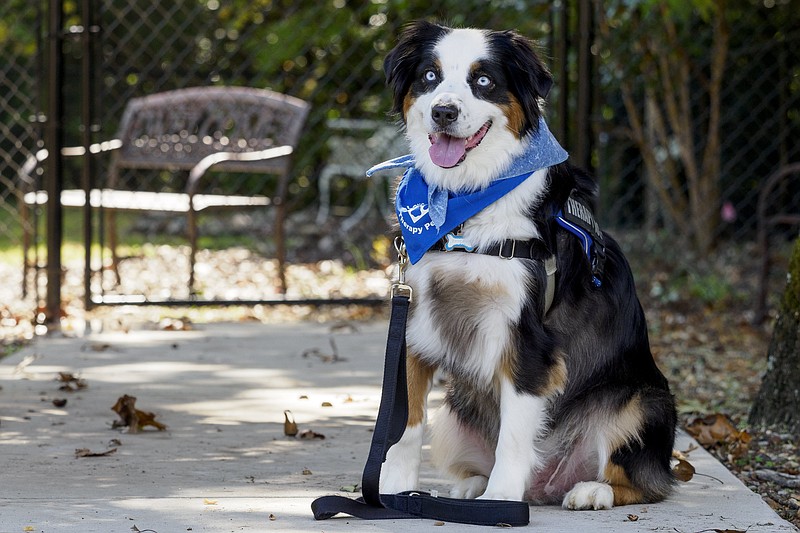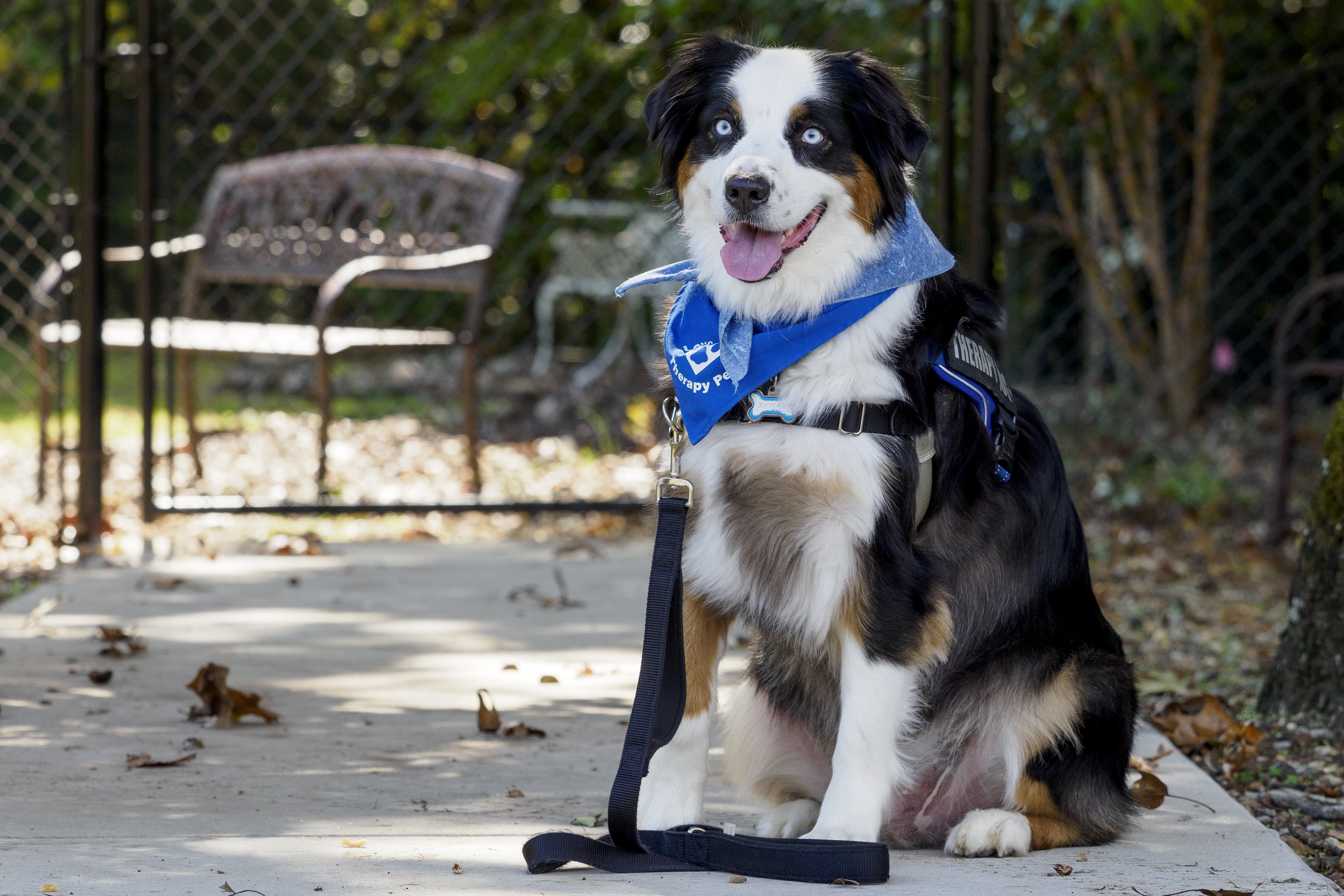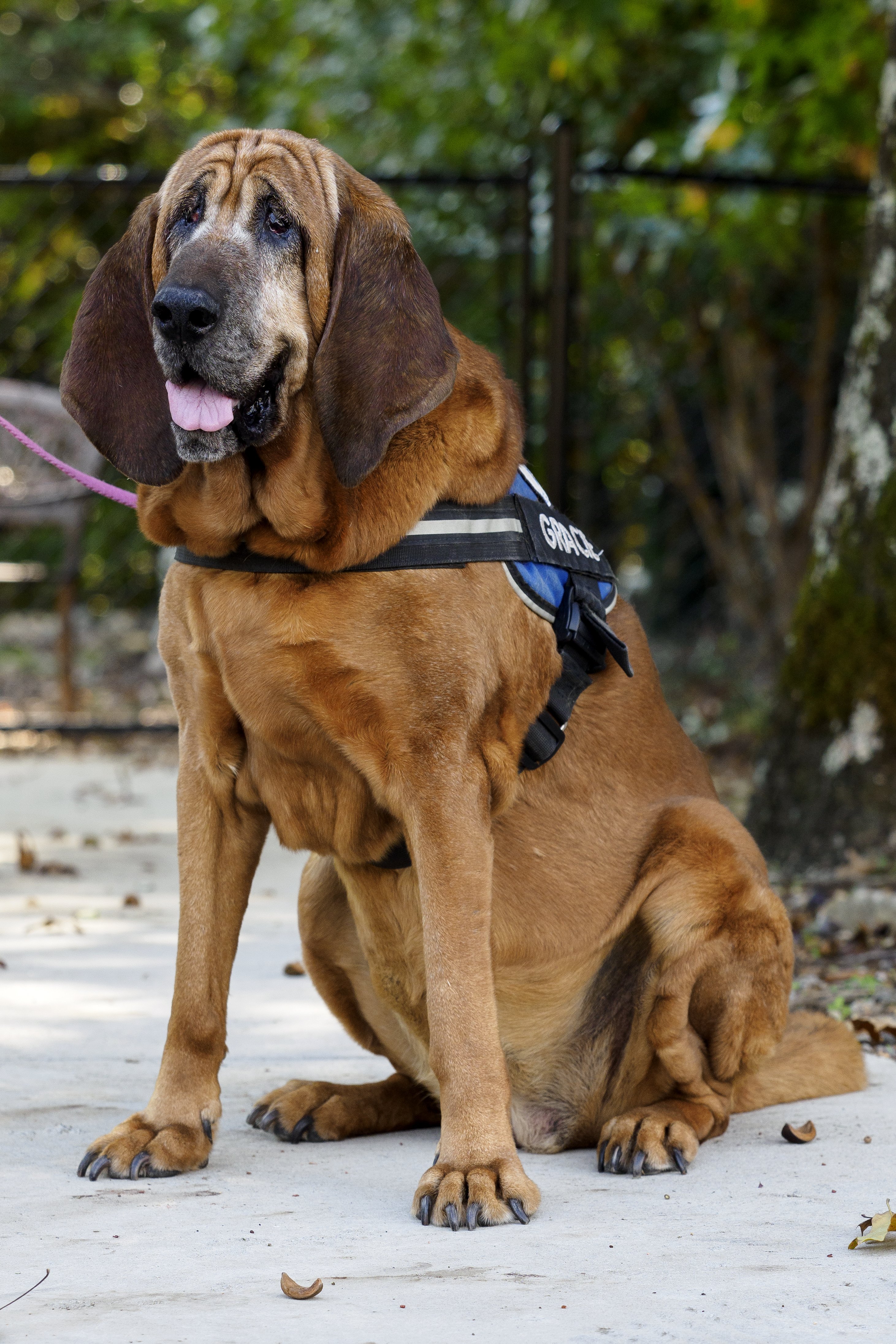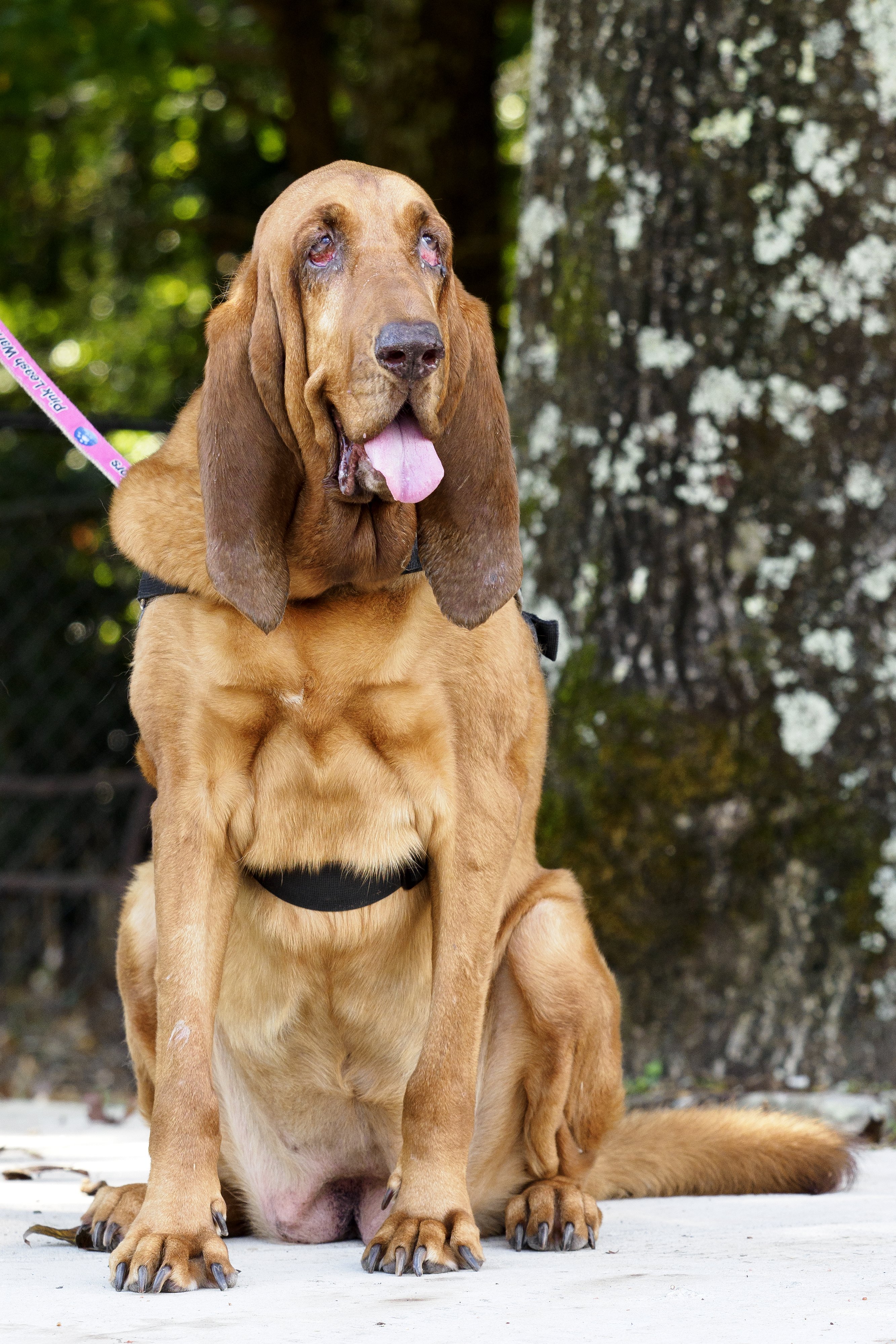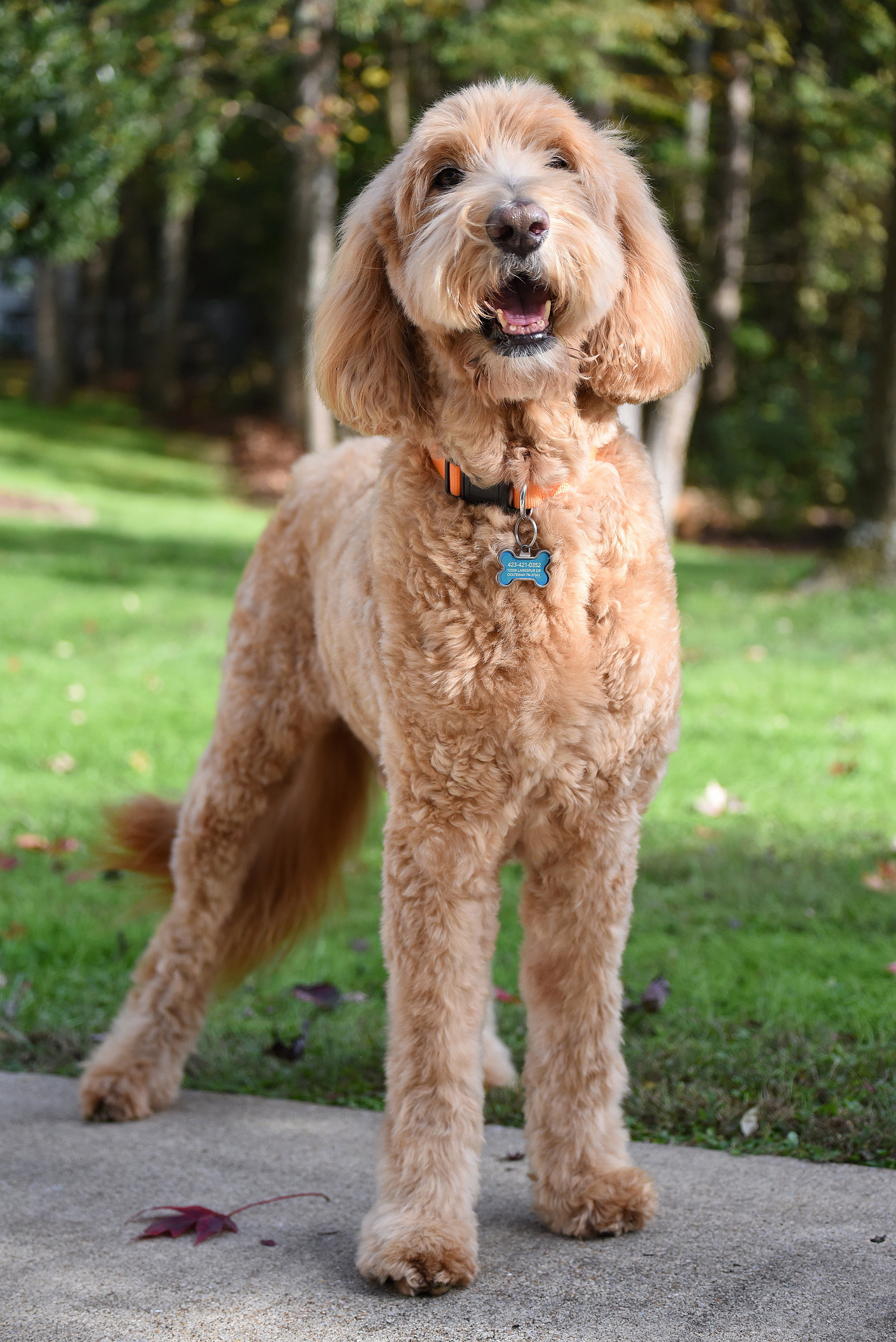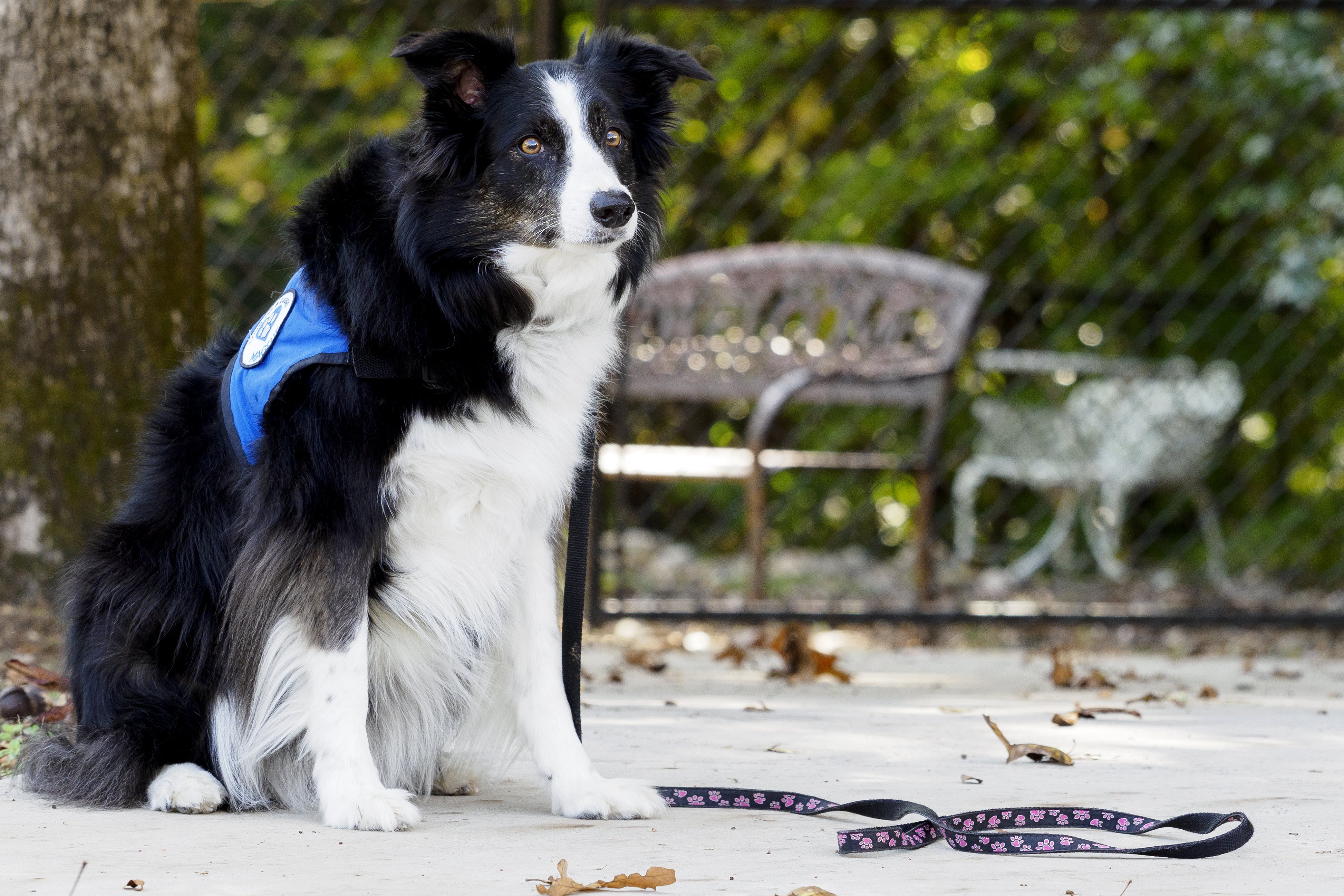Daisy Mae is like her name: cheerful - which will help her on the job.
"She's a people-person. She's engaging. It's like she's always laughing," Lynn Graham says of her 1 1/2-year-old spaniel mix.
Since September, Daisy Mae has been training to become a therapy dog through the Chattanooga chapter of Love on a Leash, a nonprofit organization that helps facilitate animal-assisted therapies.
Graham, a dog trainer by trade, has volunteered with the chapter since its 2019 launch, helping evaluate dogs' temperament and their ability to follow basic commands.
But, says Graham, "a dog can be well-trained but not make a good therapy animal."
What separates a therapy dog from the pack is an instinct to nurture, she says.
Before an animal becomes certified, it must make 10 supervised visits to hospitals, nursing homes or other care facilities, where, Graham says, "you just let the dog do its thing."
A therapy dog's purpose is to provide comfort, which can be as simple as "giving kisses or putting its muzzle under a person's arm," she says.
In March, when the pandemic hit, many of Love on a Leash's programs were suspended after the places they frequented - Children's Hospital at Erlanger and Hospice of Chattanooga, for example - began to restrict visitors.
But the volunteers didn't take a break. Instead, they found new paths to the front line.
They organized "puppy parades" at Soddy-Daisy Health Care Center, where dogs were led around to patients' windows. They appeared at an event hosted by Erlanger Behavioral Health Hospital and the Tennessee Suicide Prevention Network to help combat social isolation. At Parkridge Valley, a behavioral health center, they moved their routine "pet" sessions to the courtyard.
Twice a month, Graham and Daisy Mae, who have now completed five of their 10 required visits, participate in the Parkridge event alongside local chapter head Kathy Mindel and her certified border collie, Maggie. The moment Daisy Mae enters the yard, "her tail starts going 90 miles per hour," Graham says.
"A lot of people there are so withdrawn," she says. "But if a dog can get them to respond, or get an older person to start talking about their life, if the dog can bring these people to a happy place - even just for a minute - that's what it's all about."
To better understand these animals' important role, we got to know five therapy dogs certified through Love on a Leash. Here are their stories of connections fostered and challenges faced while fulfilling their purpose amid a pandemic.
***
Skylar; Australian shepherd; age 5
Handler: Don Abbott
Don Abbott might have never realized Skylar's potential if not for a chance encounter three years ago at Cabela's.
That day, Abbott had brought his Aussie on a trip to the store. When leaving, he met a man in the parking lot who was helping his wife from a van. The woman had cerebral palsy and was in a wheelchair. The man asked if she could pet Skylar.
Abbott was amazed by how attentive Skylar was to the woman, leaning against her and licking her hands. Their visit seemed to last forever, he remembers.
"It was so pure. I knew immediately that Skylar had a unique gift and that I had a responsibility to share it. I told my wife, 'We have to get this dog certified,'" says Abbott, who had no prior experience with therapy animals.
In 2019, Abbott had Skylar certified through Love on a Leash and the two began visiting veterans' facilities, hospice centers and support groups for children who have lost parents.
"The pandemic has slowed things way down," Abbott says, but he's trying to keep Skylar's interactions steady, so whenever possible, he gets him out in public, even if just to Lowe's.
"If he gets half a chance to meet a person, he runs up to them like 'Where have you been all my life?!'" says Abbott. "He has a knack for making people smile. He loves his work."
***
Service vs. therapy — what’s the difference?
A therapy dog is trained to provide comfort.A service dog is trained to perform tasks for a person with disabilities such as visual impairments or seizure disorders.
***
Gracie; bloodhound; age 11
Clairebelle; bloodhound; age 10
Handler: Valerie Hendrix
Gracie and Clairebelle were the first two dogs - and, so far, the only bloodhounds - to become certified through Love on a Leash in Tennessee. The breed is famously stubborn, says owner Valerie Hendrix, but "some dogs just have a natural connection with people."
She remembers one instance, especially, with a teenage girl at Children's Hospital at Erlanger whom Gracie and Clairebelle had visited about once a month over the course of a year.
"She had cancer all over her body. She was so sick," Hendrix says.
One visit, Hendrix saw the girl sitting outside the clinic, awaiting her treatment. She could tell something was wrong.
Hendrix had turned back to her dogs to lead them over to the girl, but before she could, Gracie bee-lined to her side. There, she gently laid both paws on the girl's knees.
"It was the one and only time Gracie has ever done that," says Hendrix.
Therapy dogs, after all, are trained not to jump.
The girl stroked Gracie's ears and told Hendrix, "She knows I'm having a bad day."
"It was a raw, unsolicited moment," Hendrix says. "There are some people that may not want to talk, but they always want to pet a dog."
***
Tucker; golden-doodle; age 11
Handler: Kim Smith
Before the pandemic, Tucker's favorite place to visit was Erlanger's emergency room.
The alarms; the beeps; the hustle and bustle - none of it bothered him.
His composure was comforting, and both patients and doctors welcomed his visits with an abundance of pats and ear scratches.
"He's tall with long legs and draws a lot of attention. He thinks everyone on this planet is here to pet him," says his owner, Kim Smith. Besides, she adds, "He's the perfect height for hospital beds."
Once, while making the rounds, Smith remembers they stopped to visit a woman. She was intubated, unable to talk.
The moment Smith walked Tucker into her room, the woman began to cry. As she silently stroked his fur, her tears continued to stream.
The power of their connection left a lasting impression on Smith.
"He'll just stand there as long as you need," Smith says. "Therapy dogs just know when they are needed."
***
Maggie; border collie, age 11
Handler: Kathy Mindel
As a border collie, Maggie is "busy, busy, busy," says owner Kathy Mindel, head of the local Love on a Leash chapter. But the moment she dons her official therapy vest, "she takes on a different personality," Mindel says.
When it's time to go to work, Maggie becomes calm and focused.
Certified through both Love on a Leash and the University of Tennessee's Human-Animal Bond in Tennessee (HABIT) program, Maggie and Mindel made about five visits a week to hospitals and schools prior to the pandemic.
For three years, they regularly visited second-graders at McConnell Elementary School. There, Maggie helped with the literacy program, where children could practice their reading on her.
"Dogs are not judgmental," explains Mindel. "They don't interrupt and say 'uh-uhh!' when a child says the wrong word."
Mindel remembers at the end of one semester, when the two were saying goodbye, one child told Mindel that the program had made him enjoy reading for the first time - all because Maggie had laid at his feet and listened.
Since the pandemic, Mindel says she can tell Maggie has missed her interactions with the children the most. "She mopes around. She seems kind of depressed," she says.
But fortunately, in late October, they were invited to participate in Hixson Middle School's after-school program, where Maggie now gets to spend one-on-one time with students again.
"We call it the 'Maggie hour,'" says Mindel.
People, after all, aren't the only ones who find comfort and purpose through animal therapy.
What separates a therapy dog from the pack?
In addition to being at least 1 year old, having a sweet temperament and following basic commands, dogs certified as therapy animals through Love on a Leash must also be able to demonstrate skills more specific to the job.Here are three other points evaluated by volunteer trainers which help prepare the dog to handle a hospital or school environment.* The ability to not be distracted by loud noises. To evaluate this skill, trainers may bang shopping carts or act erratically to gauge a dog’s reaction.* The ability to be separated from their owner. During training, handlers are required to hand off their dogs and walk from sight for three minutes, without the animal becoming anxious.* The ability to leave food — or pills — that may be dropped on the floor, a skill that comes from teaching a dog to always look to its handler for direction.
